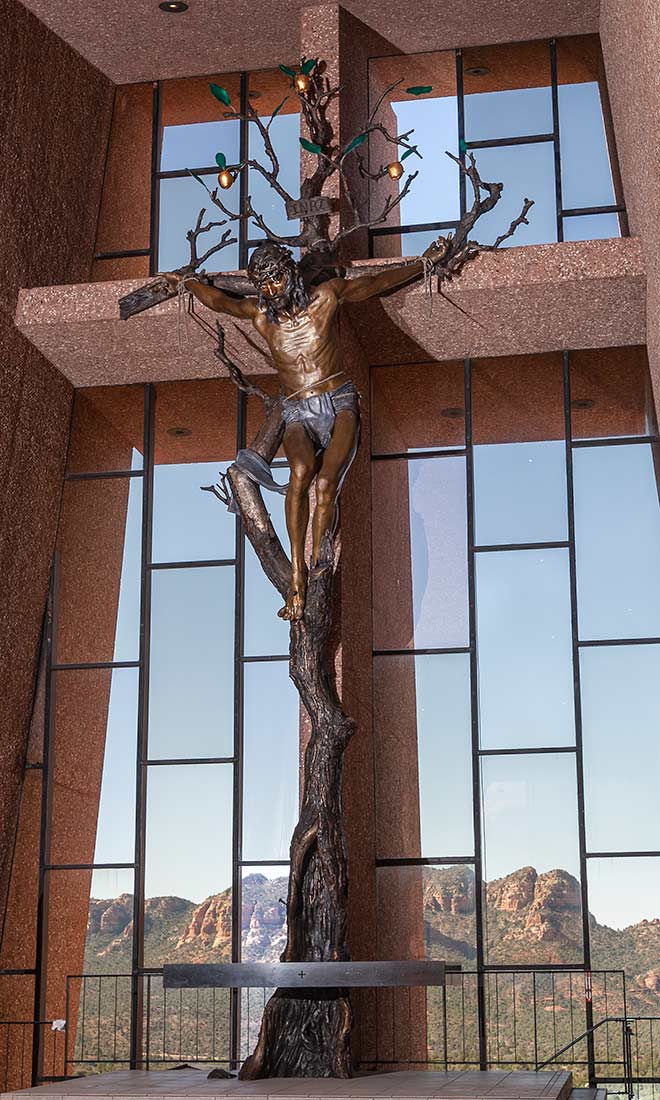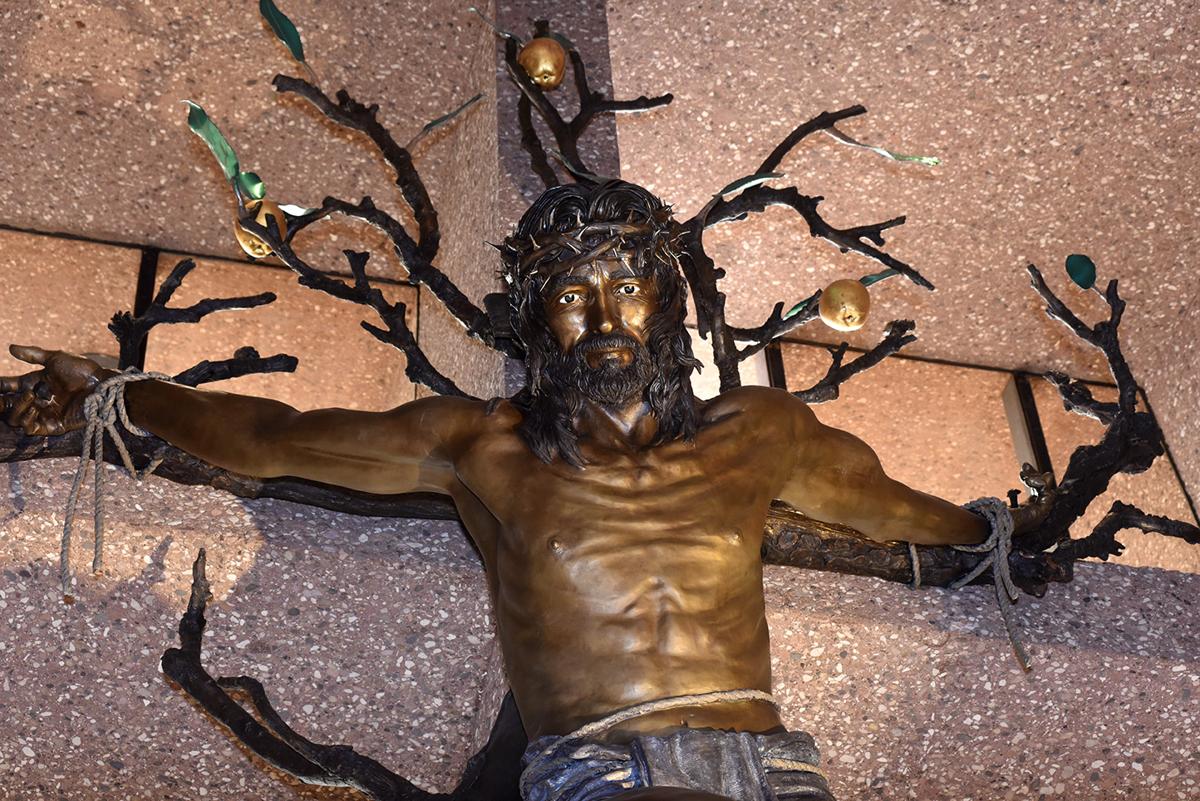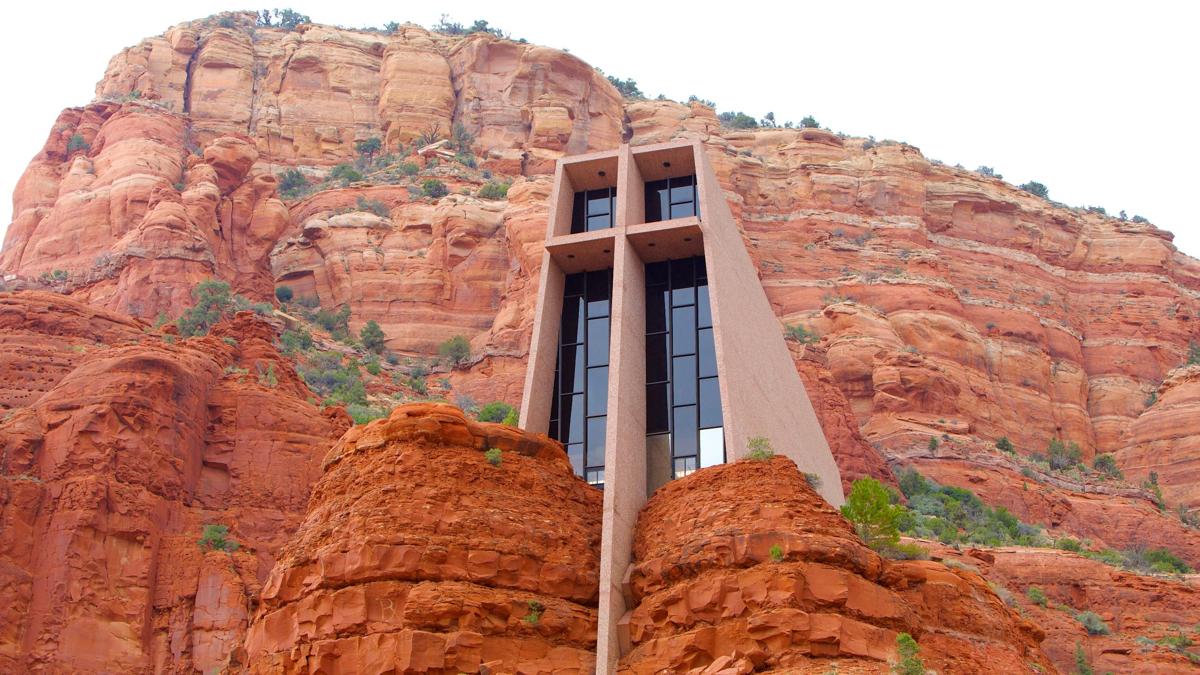March 29: “Even so Must the Son of Man Be Lifted Up”
♫ Music:
Day 41 - Monday, March 29
Title: “EVEN SO MUST THE SON OF MAN BE LIFTED UP”
Scripture: John 3:1-3,9-21
Now there was a man of the Pharisees, named Nicodemus, a ruler of the Jews; this man came to Jesus by night and said to Him, “Rabbi, we know that You have come from God as a teacher; for no one can do these signs that You do unless God is with him.” Jesus answered and said to him, “Truly, truly, I say to you, unless one is born again he cannot see the kingdom of God.” Nicodemus said to Him, “How can these things be?” Jesus answered and said to him, “Are you the teacher of Israel and do not understand these things? Truly, truly, I say to you, we speak of what we know and testify of what we have seen, and you do not accept our testimony. If I told you earthly things and you do not believe, how will you believe if I tell you heavenly things? No one has ascended into heaven, but He who descended from heaven: the Son of Man. As Moses lifted up the serpent in the wilderness, even so must the Son of Man be lifted up; so that whoever believes will in Him have eternal life. “For God so loved the world, that He gave His only begotten Son, that whoever believes in Him shall not perish, but have eternal life. For God did not send the Son into the world to judge the world, but that the world might be saved through Him. He who believes in Him is not judged; he who does not believe has been judged already, because he has not believed in the name of the only begotten Son of God. This is the judgment, that the Light has come into the world, and men loved the darkness rather than the Light, for their deeds were evil. For everyone who does evil hates the Light, and does not come to the Light for fear that his deeds will be exposed. But he who practices the truth comes to the Light, so that his deeds may be manifested as having been wrought in God.”
Poetry:
The Scattered Congregation
by Tomas Tranströmer; translated by Robert Bly
I
We got ready and showed our home.
The visitor thought: you live well.
The slum must be inside you.
II
Inside the church, pillars and vaulting
white as plaster, like the cast
around the broken arm of faith.
III
Inside the church there’s a begging bowl
that slowly lifts from the floor
and floats along the pews.
IV
But the church bells have gone underground.
They’re hanging in the sewage pipes.
Whenever we take a step, they ring.
V
Nicodemus the sleepwalker is on his way
to the Address. Who’s got the Address.
Don’t know. But that’s where we’re going.
About the Artwork #1:
Brazen Serpent Monument (2 views)
Giovanni Fantoni
Bronze
Moses Memorial Church
Mount Nebo, Jordan
The Brazen Serpent Sculpture, created by Italian artist Giovanni Fantoni, stands atop Mount Nebo in Jordan. The work is symbolic of both the bronze serpent on a pole created by Moses in the wilderness (Numbers 21:4–9) and the cross upon which Jesus was crucified (John 3:14). The sculpture recalls the bronze serpent on a staff which God instructed Moses to erect in the desert to protect the Israelites from the poisonous snakes that God himself had sent as punishment for their lack of faith. After their repentance, it was enough to simply look at the bronze statue in order to be healed and saved from the poisonous snakes. So the statue became a symbol of reconciliation with God. In addition to depicting the serpent, one sees that the looped body of the snake suggests a head and the lyrically shaped cross pieces evoke outstretched arms. The sculpture reminds us of Jesus’ words to Nicodemus, “Just as Moses lifted up the serpent in the wilderness, so must the Son of Man be lifted up…” The image thus foreshadows Christ’s crucifixion, which brings redemption and salvation to all humankind.
https://commons.wikimedia.org/wiki/File:Brazen_Serpent_Sculpture.jpg
https://towardbeauty.org/tag/giovanni-fantoni/
About the Artist:
The Italian artist, Giovanni Fantoni, is credited with designing the metal decorations inside the sanctuary of the Moses Memorial Church, as well as the bronze Brazen Serpent Monument on the exterior patio overlooking the Jordan Valley and the Dead Sea.
https://wonderstourism.com/cities-in-jordan/mount-nebo/
About the Artwork #2:
Christ of the Holy Cross (several views)
James Muir
Installed in 2018
Bronze
Height: 33 ft.
The Chapel of the Holy Cross
Sedona, Arizona
In 2016, internationally renowned sculptor James Muir was commissioned to create a monumental sculpture of the crucifixion for the acclaimed Chapel of the Holy Cross located in Sedona, Arizona. The cross of the sculpture is made to look like a double trunked tree symbolically representing the “lost” ten tribes of Israel and the two tribes of Judah. As trunk continue up, one branch becomes dead, but “this dead limb of Israel that’s broken off becomes a crossbeam for the Tree of Life,” explains Fr. Kleczewski, pastor of the Chapel of the Holy Cross. As the Judah tribe branch continues upward it bears twelve leaves, representing the twelve Apostles. The body of Christ is girdled thrice around by rope binding him to the physical earth while he raises his left hand upward to heavens, representing his divinity. His right hand pointed downward refers to his humanity. The “crown of thorns,” with three rose vines entwined around his anguished brow, represents the Holy Trinity. The crown is adorned with 100 thorns: 99 plus one for the “lost sheep” found by the Good Shepherd. Muir and Fr. Kleczewski chose to add another element to the statue that enhances its purpose with two bronze foot castings which are located on the floor of the chapel at the feet of the Christ statue, When one stands in those, Christ would be looking you directly in the eyes.
https://www.catholicsun.org/2018/04/19/new-crucifix-reinforces-highly-visited-sedona-chapel-as-pilgrimage-site
About the Chapel:
The Chapel of the Holy Cross, sitting high atop the red rocks in Sedona, Arizona, was inspired and commissioned by local rancher and sculptor Marguerite Brunswig Staude. In 1932, she was inspired by the construction of the Empire State Building to build a church. Staude initially attempted to do this in Budapest, Hungary, with the help of Lloyd Wright, son of architect Frank Lloyd Wright, however their attempt was aborted due to the outbreak of World War II. So Staude decided to build the church in her native Arizona. Richard Hein was chosen as project architect and the design was executed by architect August K. Strotz, both from the firm of Anshen & Allen. Though the chapel is built on Coconino National Forest land, the late Senator Barry Goldwater assisted Staude in obtaining a special-use permit. Completed in 1956, The Chapel of the Holy Cross receives approximately three million visitors per year.
About the Artist #2:
James N. Muir (b. 1945) is an American sculptor. His professional art career as a sculptor began in Sedona, Arizona, in 1980, and he has continued there as a full-time professional artist. To date, he has completed over one hundred sculptures, with over sixty life-size and monumental sculptures placed in public locations across the country and abroad. “Allegorical Art” is a term Muir uses to describe his art as being filled with symbolic meaning. He has built upon the recognition gained initially as an historical military sculptor to create an ever-expanding array of artistic commentary exemplifying the highest and noblest qualities of man. Some of the public collections where Muir’s work resides include West Point Military Academy in New York; Booth Museum in Georgia; Birkenau Museum at Auschwitz; Gettysburg Battlefield Museum; Pearce Western Art Museum; University of Arizona; George W. Bush Presidential Library/Museum; Scottsdale Healthcare Hospitals; and some of the most prominent private collections in America.
https://www.jamesmuir.com/about-james-muir.htm
About the Music:
“O Sacred Neck, Now Wounded” from the album Lament Songs
Lyrics:
O sacred neck, now wounded
Pressed down by blows and knees
This son of God surrounded
By silent enemies
Will no one stop and listen?
Will no one rise and speak?
Of violence and oppression
Which hanged you from that tree?
O sacred head, discounted
Lies crowned in locks and sweat
See thorns and curls now found in
Your weeping mother’s hands
O sun-kissed King of glory
What honor once was Yours
Yet now despised and gory
Our still and lifeless Lord
O man of sorrows, beaten down
Our brother’s blood cries from the ground
You bore our sin
We turned our eyes
From You the Lamb of God
O sacred body, wounded
Now breathless in the street
Your people here press onward
To be Your hands and feet
Your mouth to speak Your justice
You heartbeat for the poor
You life, it flows within us
To break down prison doors
O man of sorrows, beaten down
Our brother’s blood cries from the ground
You bore our sin
We turn our eyes
To You the Lamb of God
About the Lyricists/Composers:
Jon Guerra, Isaac Wardell, Kate Bluett, and Keith Watts
Jon Guerra is an American singer-songwriter based in Austin, Texas, who writes devotional music characterized less as Sunday morning worship music and more as Monday morning prayer music. He believes that devotional music is a collaboration with quiet and it is music for attending to the soul, for listening to God. Guerra’s debut album, Little Songs, was released in 2015. Recently Guerra composed music for Terrence Malick’s 2019 film, A Hidden Life. His newest album is Keeper of Days.
https://www.jonguerramusic.com/
Isaac Wardell is a record producer and composer who primarily writes sacred music. He is the director of Bifrost Arts, an ecumenical organization closely linked to the Presbyterian Church in America that produces written and recorded religious music and frequently performs at Christian universities and conferences. Wardell founded Bifrost Arts in 2008 “to enrich the Church and engage the world with beauty and truth through music beautiful enough that non-Christians are attracted to it.” He is currently the Director for Worship Arts at Trinity Presbyterian Church in Charlottesville, Virginia.
https://www.trinitycville.org/Isaac-Wardell
Keith Watts is a singer-songwriter and worship leader based in Berkeley and Oakland, CA; originally from San Diego, CA. He studied music performance at UC Berkeley, and has since been composing, collaborating, and performing in bands and various song projects. Keith Watts’ lyrics and songs come out of inspiration from and for the church. But, in addition, his vision is to offer the humanness of his own ramblings, which vacillate between the realms of deep faith and sincere doubt, joy and deep depression, rage, and reconciliation.
https://www.keithwattsmusic.com/about.html
Kate Bluett is a part of a new generation of Catholic lyricists, one who strives to create new hymns that are truly prayerful. She’s the sort of person who thinks carefully about the philosophy behind her work, and has spent time reflecting on the place of hymns in the modern world. A cradle Catholic who wandered a bit before returning to the Church, Bluett holds a B.A. and an M.A. from the University of Dallas. She is a published poet and the homeschooling mother of two young boys.
http://mindspirit.com/author/katebluett/
https://aleteia.org/2017/11/13/lyricist-kate-bluett-wants-us-singing-new-songs-unto-the-lord/
About the Performers:
Jon Guerra, Matt Maher, and The Porter’s Gate
Matt Maher (b. 1974) is a Canadian contemporary Christian music artist, songwriter, and worship leader who currently lives in the United States. He has written and produced nine solo albums to date. Three of his albums have reached the Top 25 Christian Albums Billboard chart and four of his singles have reached the Top 25 Christian Songs chart. Maher has been nominated for nine Grammy Awards in his career and was awarded the Songwriter of the Year for an artist at the 2015 GMA Dove Awards. Maher was born and raised in Newfoundland, Canada. His parents recognized his musical talent, and he grew up taking piano lessons and immersing himself in a broad variety of music, including playing in concert and jazz ensembles, singing in a choir, and playing in a garage rock band. Maher started his post-secondary studies at Memorial University of Newfoundland and continued his studies in the Jazz Department at Arizona State University. Maher lives in Nashville, Tennessee.
www.mattmahermusic.com
The Porter’s Gate was founded to help worship leaders respond theologically to the pressing questions of our times through the writing of new worship songs and the creation of new liturgical resources. “We wanted to release as many songs as we were able to record for use by churches in a time where worship leaders are looking for songs and liturgical resources that give expression to the unusual and troubling circumstances of 2020 that our congregants and neighbors are experiencing,” explains co-founder Megan Wardell. Their latest two albums, Justice Songs and Lament Songs, were released in September of 2020. “We have been writing these songs for almost a year, at first as in-person songwriting retreats, and then remotely through email and Zoom during the Covid-19 pandemic,” says co-founder Isaac Wardell, who also produced the albums. “Listeners will notice if you look at the songwriting credits that some of these songs have five or six authors. It was our intention to get a variety of people in the room, people from different backgrounds, at churches that worship very differently, interacting on these themes and scriptures of justice and lament.” This past July, a small group of musicians merged quarantine bubbles on a farm in Central Virginia to record the fruit of those songwriting sessions. Some collaborators are familiar from past projects: Liz Vice, Sandra McCracken, Latifah Alattas, Paul Zach, Jessica Fox, IAMSON, and John Swinton. There are also a few new faces, including Matt Maher, Jon Guerra, Brian Nhira, and Taylor Leonhardt.
https://www.theportersgate.com/
About the Poet:
Tomas Gösta Tranströmer (1931–2015) was a Swedish poet, psychologist, and translator. His poems capture the essence of the long Swedish winters, the rhythm of the seasons, and the palpable atmospheric beauty of nature. Tranströmer’s work is also characterized by a sense of the mystery and wonder underlying the routines of everyday life, a quality which often gives his poems a religious dimension. Tranströmer is acclaimed as one of the most important Scandinavian writers since the Second World War. Critics praised his poetry for its accessibility, even in translation. He was the recipient of the 1990 Neustadt International Prize for Literature and the 2011 Nobel Prize in Literature.
https://www.poetryfoundation.org/poets/tomas-transtromer
About the Devotion Author:
Mike Ahn
Director of Worship and Formation
Host of The Biola Hour Podcast
Biola University
Mike Ahn oversees Biola’s chapel programs, worship teams, the annual Torrey Conference, The Biola Hour podcast, and serves on the pastoral care team. He is a graduate of Haverford College (B.A., History, ’01) and Talbot School of Theology’s Institute for Spiritual Formation (M.Div., Spiritual Formation, ’09), and he is currently completing his Ph.D. in Educational Studies at Talbot. If he could, Mike would have two In-N-Out cheeseburgers with chopped chilis, animal style fries, and a Pamplemousse LaCroix for every meal.





